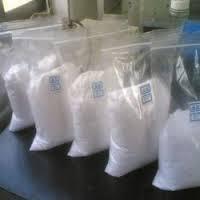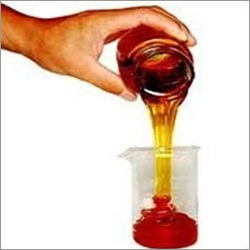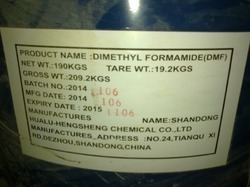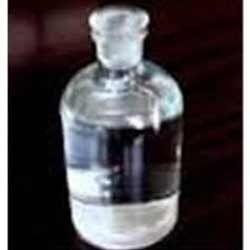Para Toluene Sulfonic Acid
Para Toluene Sulfonic Acid Specification
- Residue on Ignition
- 0.1%
- Molecular Formula
- C7H8O3S
- Melting Point
- 103106C
- Place of Origin
- India
- Moisture (%)
- 0.5%
- Loss on Drying
- 0.5%
- Molecular Weight
- 172.20 g/mol
- Boiling point
- Not applicable (decomposes)
- Heavy Metal (%)
- 0.001%
- Acid Value
- <500 (mg KOH/g)
- Particle Size
- 30-60 mesh
- Assay
- 99%
- HS Code
- 2904 1000
- Storage
- Store in cool, dry place; tightly sealed
- Ph Level
- <1 (1% Solution)
- Viscosity
- Not applicable (solid)
- EINECS No
- 203-180-0
- Other Names
- PTSA; p-Toluenesulfonic acid; 4-Methylbenzenesulfonic acid
- CAS No
- 104-15-4
- Type
- Organic Acid
- Grade
- Reagent Grade / Industrial Grade
- Usage
- Catalyst, Intermediate, Pharmaceuticals, Resin Curing Agent
- Purity
- 99% Min
- Appearance
- White crystalline powder
- Application
- Used in esterification, pharmaceuticals, resin curing, organic syntheses
- Raw Material
- Toluene, Sulfonic Acid
- Smell
- Characteristic
- Color
- White
- Form
- Solid
Para Toluene Sulfonic Acid Trade Information
- Minimum Order Quantity
- 25 Kilograms
- Payment Terms
- Western Union, Paypal, Letter of Credit (L/C), Cash in Advance (CID), Cash Advance (CA)
- Supply Ability
- 1000 Kilograms Kg Per Week
- Delivery Time
- 7 Days
- Sample Available
- Yes
- Sample Policy
- Sample costs shipping and taxes has to be paid by the buyer
- Main Export Market(s)
- Western Europe, Australia, North America, Eastern Europe, Africa, Central America, Middle East, South America, Asia
- Main Domestic Market
- All India
About Para Toluene Sulfonic Acid
Para Toluene Sulfonic Acid
hemical formula:
appearance: off-white/ white powder.
free sulphate: max 1%.
assay: 99. 0% ± 1%
moisture: 10. 0% max
solubility: soluble in water and alcohol.
hygroscopicity: extremely hygroscopic
uses:
reaction catalyst.
hydrotropic agent.
sodium ptsa
sodium p-toluene sulphonate 50% is also available
pack size: 50kgs hdpe bag with pp liner.
store in well closed container/bag in cool and dry place
Versatile Catalytic Powerhouse
PTSAs robust acidity and stability make it indispensable as a catalyst in various organic syntheses, particularly in esterification and resin curing. Its high purity and consistent particle size (30-60 mesh) deliver reliability in pharmaceutical applications and industrial manufacturing processes where precise results are essential.
Easy to Handle and Store
Supplied as a free-flowing white crystalline solid, PTSA offers ease of measurement and mixing. It must be stored in a cool, dry, tightly sealed environment to maintain its shelf life of up to two years. The product is shipped in sturdy 25 Kg HDPE packaging, ensuring both safety in transport and preservation of quality.
FAQs of Para Toluene Sulfonic Acid:
Q: How should Para Toluene Sulfonic Acid be stored to maintain its quality?
A: PTSA should be kept in a cool, dry place inside tightly sealed HDPE bags or drums. Proper storage conditions ensure a stable shelf life of up to two years and prevent degradation or contamination.Q: What are the main industrial uses of PTSA?
A: PTSA is widely used as a catalyst in esterification reactions, as a curing agent for resins, and as an intermediate in pharmaceutical production and organic syntheses due to its strong acidity and high purity.Q: Where is PTSA manufactured and exported from?
A: The majority of PTSA is produced and exported from India, with suppliers and exporters providing packaging options suitable for international transport, ensuring compliance with hazardous material regulations.Q: What benefits does PTSA offer in pharmaceutical applications?
A: PTSA delivers high chemical purity (99%) and low levels of impurities (lead and arsenic <2 ppm each), making it suitable for sensitive pharmaceutical processes and providing reliable, efficient catalysis with minimal residuals.Q: How is PTSA typically handled and transported?
A: Being classified as a corrosive substance (Hazard Class 8; UN 2585), PTSA should be handled using protective gear and transported in compliance with hazardous material guidelines, with secure HDPE packaging to mitigate risks.Q: What precautions are necessary when using PTSA in industrial processes?
A: Due to its irritant properties and strong acidity (pH <1 in solution), handlers should utilize appropriate PPEincluding gloves and gogglesand ensure good ventilation to avoid direct skin or respiratory exposure.

Price:
- 50
- 100
- 200
- 250
- 500
- 1000+
More Products in Pharma Chemicals Category
Dimethylformamide Chemical
Price 67 INR
Minimum Order Quantity : 25 Kilograms
Grade : Other, Industrial Grade
Form : Liquid
Place of Origin : India
Purity : 99.8%
Dimethyl Formamide DMF
Price 57 INR
Minimum Order Quantity : 25 Kilograms
Grade : Other, Industrial, Pharma
Form : Liquid
Place of Origin : India
Purity : 99.9%
Methylene Dichloride (MDC)
Price 47 INR
Minimum Order Quantity : 25 Grams
Grade : Other, Technical/Industrial Grade
Form : Liquid
Place of Origin : India
Purity : 99.9%
Butyl Acetate
Price 77 INR
Minimum Order Quantity : 25 Kilograms
Grade : Medicine Grade
Form : Liquid
Place of Origin : India
Purity : 99%
 English
English Spanish
Spanish French
French German
German Italian
Italian Chinese (Simplified)
Chinese (Simplified) Japanese
Japanese Korean
Korean Arabic
Arabic Portuguese
Portuguese Send Inquiry
Send Inquiry




 Send Inquiry
Send Inquiry Send SMS
Send SMS
